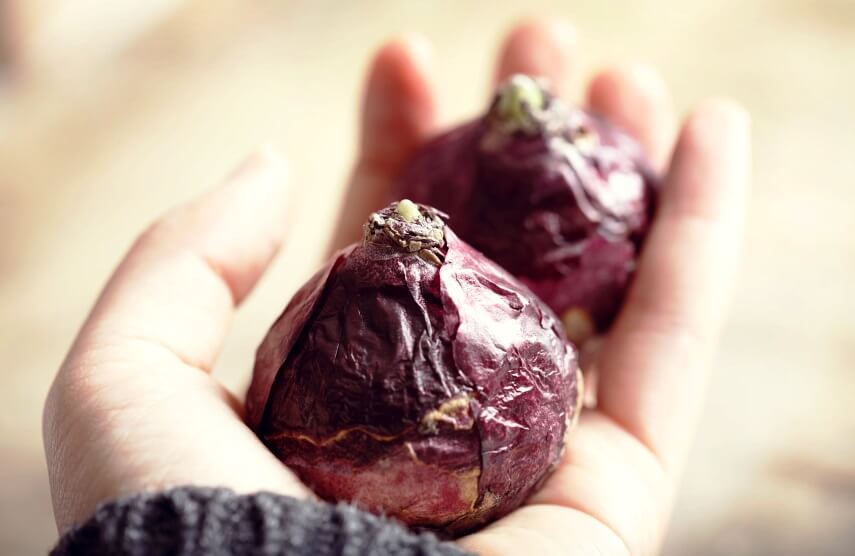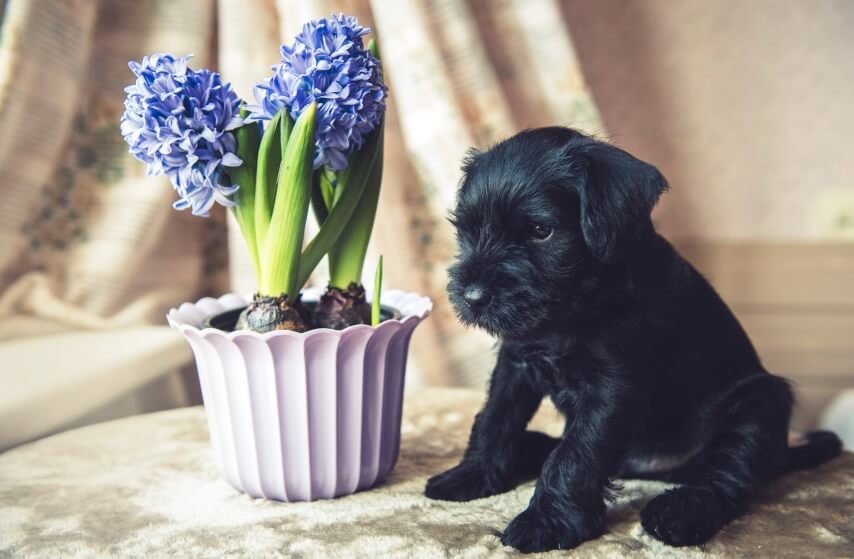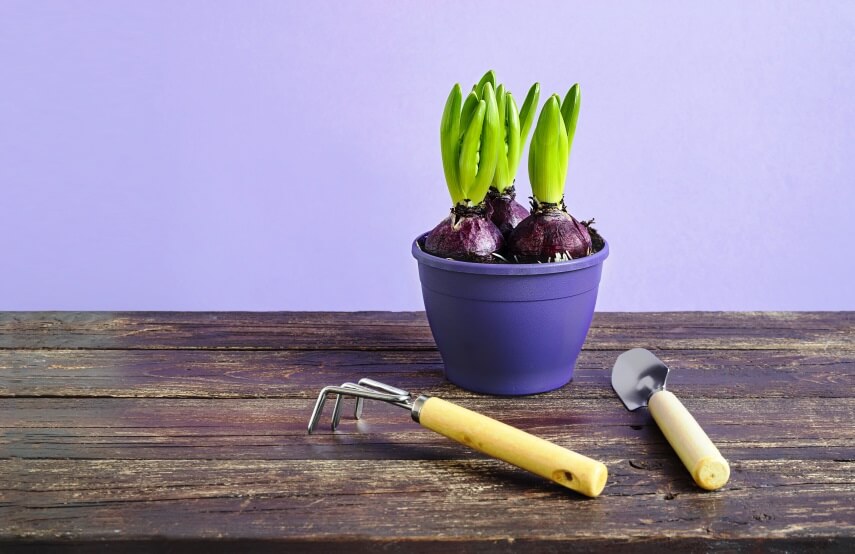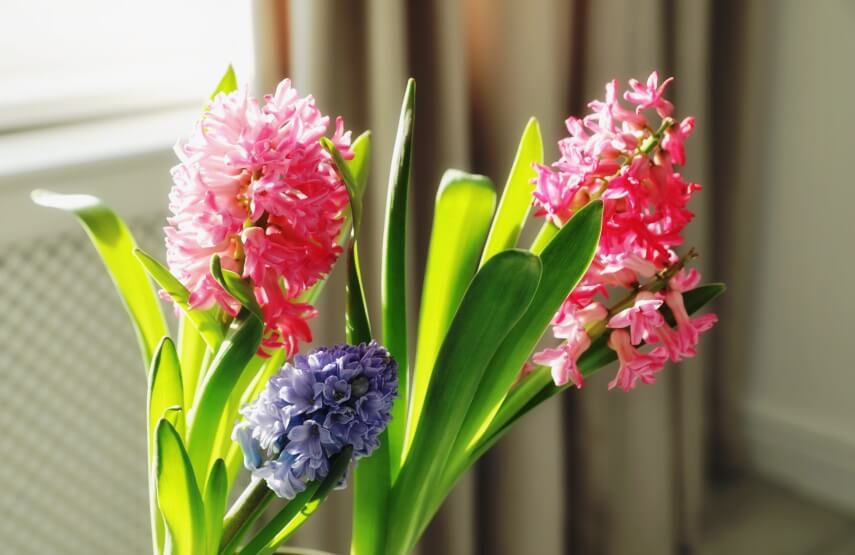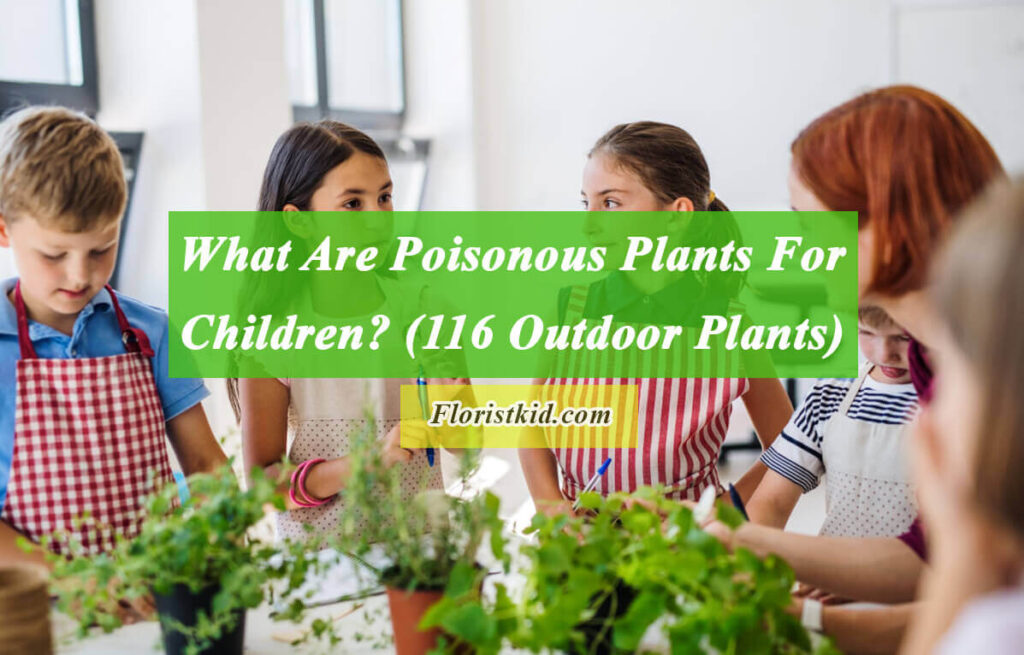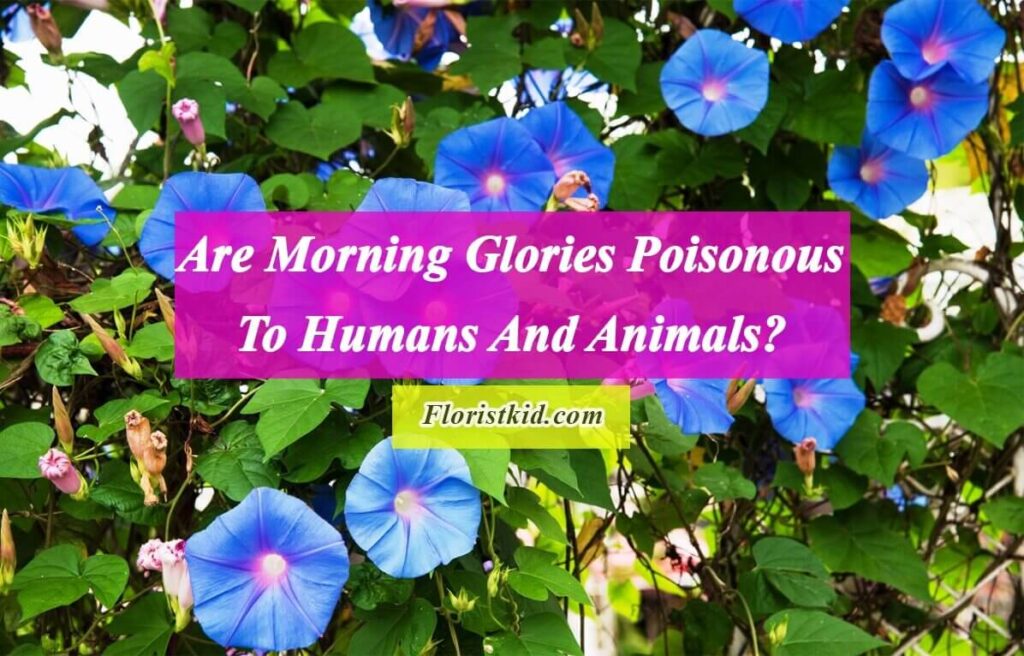Hyacinths (Hyacinthus orientalis) are beautiful and fragrant spring flowers that are popular for adding color and charm to gardens and homes. However, before you bring them into your home, knowing whether they are safe or poisonous to humans and animals is essential.
Hyacinths have been known to cause allergic reactions in some people, and they contain substances that can be toxic to pets. The safety of hyacinths has been debated for a long time, and many people are confused about whether they should keep these flowers in their homes. Here, we will help you unveil the truth about hyacinths, their poisonousness level, and how they can affect humans and animals. We will also cover some precautions you can take to ensure your safety.
If you are interested in this topic, you can also read
<<Are Poinsettias Poisonous? >> and <<Is Cyclamen Poisonous? >> articles.
Are Hyacinths Poisonous To Humans And Animals?
The short answer is yes; hyacinth bulbs are poisonous. But, before allowing hyacinths into your home, let’s find out more about their level of toxicity and how to safeguard both humans and animals.
Hyacinths And Their Popularity
Hyacinths, with their vibrant colors and strong fragrance, have long been a beloved addition to gardens and floral arrangements. These beautiful spring-blooming flowers are known for their unique bell-shaped flowers that come in various hues, including shades of purple, pink, white, and blue. Their delicate yet robust appearance has made them a popular choice for both professional florists and home gardeners.
Hyacinths are relatively easy to grow, making them accessible to both experienced gardeners and beginners. With proper care, their bulbs can thrive in various climatic conditions and soil types, making them versatile and adaptable.
Hyacinths symbolize various meanings and emotions. Hyacinths are connected to concepts like rebirth, sincerity, and playfulness. This makes them a popular choice for special occasions like weddings, anniversaries, and birthdays, where the gift of flowers conveys heartfelt sentiments.
However, amidst the allure and charm of hyacinths, an important question often arises: Are hyacinths poisonous? In the following sections, we will delve into the truth about the safety of hyacinths, exploring their potential effects on both humans and animals.
Hyacinths: Safe Or Poisonous?
In terms of humans, hyacinth leaves and flowers are somehow nontoxic (mildly toxic if eaten alot). But their Bulbs are poisonous to humans and should not be consumed. It’s also important to note that some individuals may have allergic reactions to certain flowers, including hyacinths. These reactions can range from mild skin irritation to more severe respiratory issues.
Regarding pets, Hyacinths, particularly their bulbs, are poisonous to cats and dogs. Hyacinths contain substances that can be toxic to our furry friends if eaten in large amounts. The bulbs of hyacinths are the most toxic part, containing alkaloids like calcium oxalate that can cause gastrointestinal trouble, vomiting, drooling, and, in rare cases, more severe symptoms.
Toxic Components Of Hyacinths
Lycorine alkaloid and calcium oxalate are believed to be present in Hyacinth bulbs. The bulbs have occasionally resulted in poisoning when people mistakenly eat them for onions [1,2].
Hyacinth bulbs
Hyacinths And Human Safety: Potential Risks And Precautions
Regarding the safety of hyacinths for humans, it is important to be aware of potential risks and take necessary precautions. While hyacinths are generally safe to handle and enjoy, there are a few aspects to consider.
Hyacinths contain calcium oxalate crystals, which can cause irritation or discomfort if ingested. These crystals are found in various parts of the plant, including the bulbs, leaves, and flowers. Therefore, it is advisable to handle hyacinths with care, especially if you have sensitive skin or a history of allergies.
If you come into direct contact with hyacinth sap or plant parts, it’s recommended to wash your hands thoroughly with soap and water to remove any potential irritants. Additionally, it is wise to avoid touching your eyes or face after handling hyacinths, as this can help prevent any discomfort or allergic reactions.
For individuals with known allergies or sensitivities, it’s essential to consider extra caution and possibly avoid close contact with hyacinths altogether. If you experience symptoms such as skin redness, itching, swelling, or difficulty breathing after being in contact with hyacinths, it is crucial to seek medical attention immediately.
Other Potential Concerns With Hyacinths
It is important to note that some individuals may have allergies or sensitivities to the fragrance of hyacinths. When exposed to the strong scent of hyacinths, these people may experience symptoms such as sneezing, congestion, or watery eyes. Before introducing hyacinths into your home or garden, it’s always a good idea to be mindful of any potential allergies or sensitivities.
Hyacinths And Pet Safety: The Dangers For Cats And Dogs
If you’re a pet owner and a lover of hyacinths, it is vital to understand the potential dangers these beautiful flowers can pose to your furry friends. The bulbs are the most poisonous part of a hyacinth plant, which contains calcium oxalate. When chewed or consumed, symptoms such as oral irritation, drooling, vomiting, and difficulty swallowing may appear. More severe reactions like difficulty breathing or even organ damage can occur in some cases.
While the flowers and leaves of hyacinths are generally less poisonous than the bulbs, they can still cause mild gastrointestinal trouble if consumed in large amounts. It’s best to discourage your pets from nibbling on any part of the plant, especially during the planting season, to ensure their safety.
If you suspect your pet has ingested a hyacinth bulb or is exhibiting any unusual symptoms, it is crucial to seek immediate veterinary attention. It is also a good practice to familiarize yourself with the specific symptoms and emergency procedures related to plant poisoning in your region.
Symptoms Of Hyacinth Poisoning In Humans And Animals
In humans, ingesting hyacinth bulbs, leaves, or flowers can lead to various symptoms, including nausea, vomiting, diarrhea, abdominal pain, and in severe cases, difficulty breathing or even unconsciousness. Skin irritation or rashes may also occur if there is direct contact with the plant. People who frequently handle the bulbs may experience erythema, hair loss, and pustular lesions. It is important to note that the severity of symptoms can vary depending on the individual and the amount ingested.
Hyacinth poisoning can manifest in different ways in animals, especially cats and dogs. Common signs may include drooling, vomiting, diarrhea, loss of appetite, and sometimes difficulty breathing or tremors.
Hyacinth bulbs may cause intestinal discomfort, increased salivation, improper feed digestion, weight loss, regurgitation of rumen contents, diarrhea, and even death in cattle fed with these bulbs [3].
Safe Practices For Handling Hyacinths
Here are some safe practices to keep in mind:
- Wear gloves: If you have sensitive skin or allergies, it is a good idea to wear gloves when handling hyacinths. This can help prevent any potential skin irritation or allergic reactions.
- Wash your hands: After handling hyacinths, thoroughly wash your hands with soap and water. This will help remove any traces of pollen or other substances that may cause skin irritation or be harmful if ingested.
- Keep hyacinths away from pets: While hyacinths are generally safe for humans, they can be toxic to pets, especially cats and dogs. Keeping these flowers out of reach of curious pets who may be tempted to nibble on the leaves or flowers is advisable. If you suspect your pet has ingested any part of a hyacinth, it is essential to contact your veterinarian immediately.
- Avoid contact with eyes and mouth: Hyacinths can produce pollen, which may irritate the eyes or throat if inhaled or ingested. It’s best to avoid touching your eyes or mouth after handling these flowers and to keep them away from children who may not understand the potential risks.
- Tell children about hyacinths: It is important to educate kids about the potential dangers of consuming parts of the hyacinth plant. Explain to them that while the flowers are beautiful, they should never be eaten. Make sure to keep hyacinths in areas where children cannot easily reach them, such as high shelves or hanging baskets.
Conclusion: Finding A Balance Between Enjoying And Safety
While hyacinths can bring joy and beauty to our surroundings, it is essential to prioritize safety. By taking necessary precautions and being mindful of the potential risks; you can enjoy the presence of hyacinths without compromising the well-being of your family members and your beloved animals.
It is important to note that the level of toxicity can vary depending on the species and individual sensitivity. Some pets may not experience any adverse effects from hyacinth ingestion, while others may be more susceptible. It is always better to err on the side of caution and keep potentially harmful plants out of reach.
Other References:
- https://link.springer.com/book/10.1007/978-3-7643-8338-1
- https://ecommons.cornell.edu/bitstream/handle/1813/3497/Common%20Poisonous%20Plants.pdf;sequence=2
- https://www.sciencedirect.com/science/article/abs/pii/B9780124032507500145
- https://pubmed.ncbi.nlm.nih.gov/30967518/
- https://dergipark.org.tr/en/pub/cupmap/issue/57905/828624
- https://www.researchgate.net/publication/316106746_The_Phytochemistry_Toxicology_and_Warning_Signs_of_the_Poisonous_Flora_of_Jammu_and_Kashmir_India
- https://ir.library.oregonstate.edu/downloads/4q77fr55n




